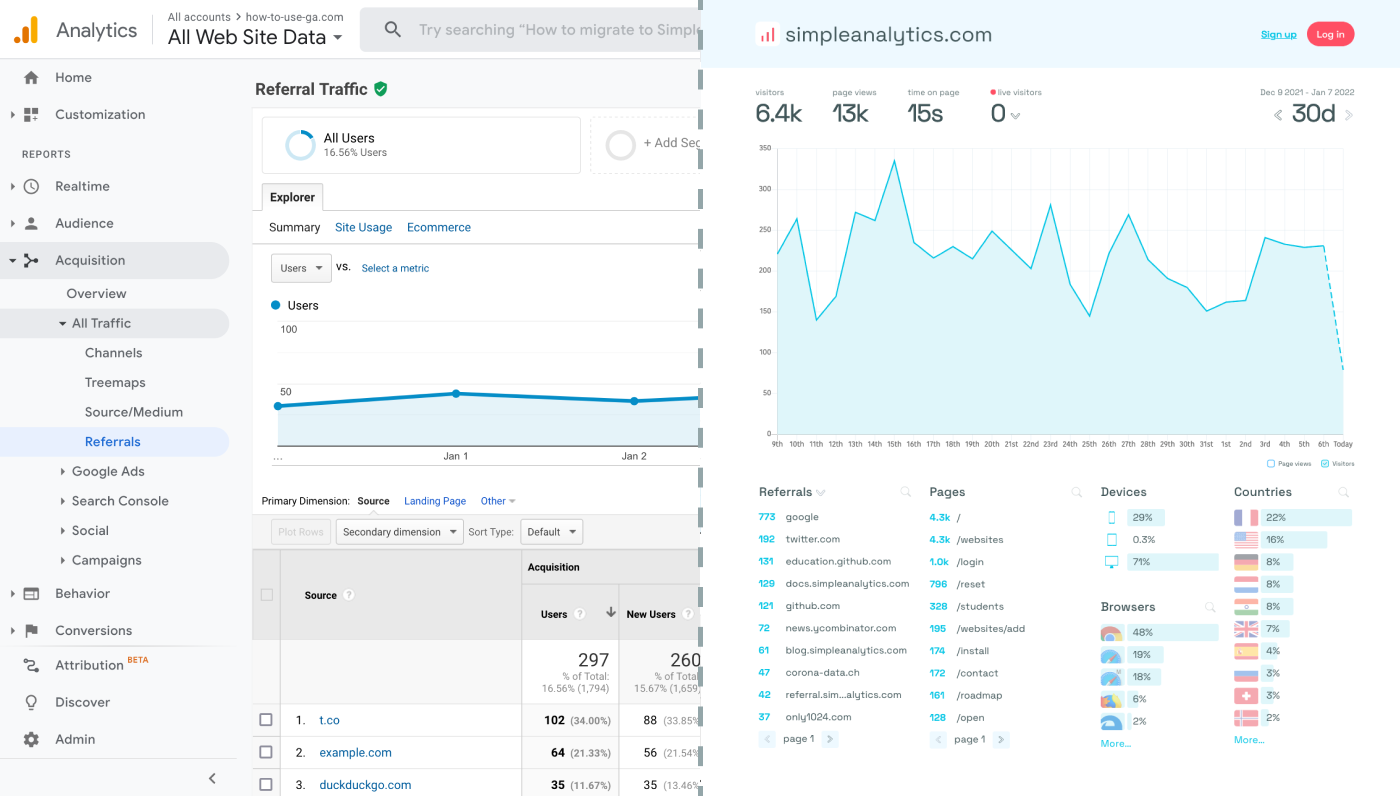Integrating Google Analytics with your website can help you better understand your traffic and optimize performance. This blog post will guide you through the process of adding Google Analytics to Digital Ocean, step by step.
Let's dive in!
Before we dig in you need to know that Google Analytics is complex and a bit clunky. There are other options that give you the same insights in a slick and straightforward dashboard.
Simple Analytics is one of them. A privacy-friendly and simple analytics tool - just the insights you need in a straightforward dashboard. (And its also free yes).

All right, now let's get into answering your question!
Set Up Google Analytics
The first step in integrating GA with your website is to set up a Google Analytics account and create a property for your website. If you're new to GA, follow these steps:
. Create a Google Analytics Account: Visit the Google Analytics website and sign in with your Google account. If you don’t have an account, you’ll need to create one.
- Set Up a New Property: Follow the on-screen instructions to create a new property. Be sure to select "Web" as the platform type and provide the necessary details for your website.
- Obtain Your Tracking Code:: Inspect your property and copy its tracking code. You will need it to integrate Google Analytics.
- (Optional) Create Extra Properties: The tracking code from each Google Analytics property contains a unique Measurement Code. If you want to track multiple website, make sure you create a property for each website and use the correspondent tracking code. This prevents GA from conflating the data.
Add Google Analytics to Your Website
Adding Google Analytics to your website hosted on DigitalOcean involves inserting the GA tracking code into your site's HTML. Here's how you can do it:
For Static Websites:
If your site consists of static HTML files, you'll need to manually add the GA tracking code to each page you want to track. Paste the GA tracking code snippet just before the closing </head> tag in each HTML file. If your site uses a common header file or template, you can add the code there to apply it across all pages.
For Websites Using a CMS or Web Framework:
If your website is built with a Content Management System (CMS) like WordPress or a web framework such as Django or Ruby on Rails, the process will vary:
- WordPress: Use a plugin like "Insert Headers and Footers" or the built-in theme editor to add the GA tracking code to your theme's header.
- Django/Ruby on Rails: Add the GA tracking code to the base template file (
base.html.erbfor Rails orbase.htmlfor Django) in your project.
Verify the Integration
After adding the Google Analytics tracking code to your website, it's important to ensure it's working correctly:
- Visit Your Website: Generate some traffic by visiting your site.
- Check Google Analytics: Log in to your Google Analytics account and go to the Realtime report to see if your visit is being tracked. This indicates that GA is successfully collecting data from your site.
Final Thoughts
Adding Google Analytics to your project can give you great insights. However, ask yourself: is Google Analytics the right tool for you?
GA is an overpowered solution for straightforward analytics. If you're looking for a simple and intuitive dashboard with the insights you need, there are better alternatives.
If this resonates with you, feel free to give Simple Analytics a spin. You just need to add the script to your app and off you go. This takes about one minute- and there is a free version as well!
Enjoy!
